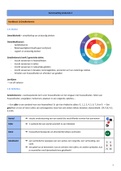Physiology
ogy Problems
Equati
Equations,
ons, Brief Explanation
Explanations,
s, Normal Values, and Answer Key
*Cardiac Output (CO in L/min)
CO = Stroke Volume (SV) x Heart Rate (HR)
CO ≈ 5 L/min (Normal value used in lab)
*Renal Blood Flow (RBF in ml/min)
The amount of blood that travels toward the kidneys through the renal arteries.
RBF = ¼(CO) ∴ RBF = ¼(5 L/min) = 1.25 L/min = 1250 ml/min
RBF ≈ 1200 ml/mi
ml/minn (Normal value used in lab)
*Effective Renal Blood Flow (ERBF in ml/min)
Only about 90% of the RBF actually reaches the nephrons at the glomeruli; therefore, this number indicates
the estimated, or effective, blood flow that actually reaches the nephrons per minute.
ERBF = 0.9(RBF) ∴ ERBF = 0.9(1200ml/min) = 1080 ml/min
ERBF ≈ 1080ml/min (Normal value used in lab)
*Renal Plasma Flow (RPF in ml/min)
Since it is the plasma that is actually filtered in the kidney, it is important to know the amount of plasma
that actually reaches the kidneys, which is represented by this number.
RPF = RBF(1 – HCT)
Normal HCT = 0.45, or 45% (men) ∴ RPF = 1200 ml/min(1-0.45) = 660 ml/min
RPF ≈ 660ml/min (Normal value used in lab)
*Effective Renal Plasma Flow (ERPF in ml/min)
As in the blood flow, only about 90% of the plasma that flows through the renal artery actually reaches the
nephrons. This figure represents the estimated amount of plasma that reaches the glomeruli per minute.
ERPF = 0.9(RPF) ∴ ERPF = 0.9(660 ml/min) = 594 ml/min
ERPF ≈ 594 ml/min (Normal value used in lab)
*Glomerular Filtration Rate (GFR in ml/min)
This figure refers to the amount of plasma that is actually filtered into Bowman’s capsule. About 20% of
the plasma that reaches the glomeruli is filtered. This amount is often expressed either as L/day or
ml/min.
About 180 L of plasma is filtered daily.
GFR = 180 L/day = .125 L/min = 125 ml/min
1440 min/day
GFR ≈ 125 ml
ml/min
/min (Normal value used in lab)
*Renal Clearance Value (RCVs,or Cs, in ml/min)
Clearance refers to the amount of a specific substance “S” that is removed from the plasma and excreted
in urine in a time frame.
RCVs = Us x V
Ps
Us = Urine concentration of substance (s), V = Urine flow rate, & Ps = Plasma concentration of substance (s)
Note: if subject in question is inulin, the RCV inulin will equal the GRF. (See definition of inulin)
*Excretion (Es in mg/min)
This will determine the amount of a substance that is excreted in the urine in a specific time frame
considering filtration, secretion, and reabsorption.
Excretions = filtrations + secretion s - reabsorptions
Filtration Load or Tubular Loads = (GFR) x (Plasma Concentration s)
Secretions = Excretions – Filtrations + Reabsorption s
Excretions = (Urine Flow Rate)(Urine Concentrations) alternative fformula
ormula used to calculate e
excretion
xcretion
, Definitions & Relevance:
Inulin: This is a substance that is foreign to the body. It is freely removed through filtration but is not secreted or
reabsorbed. It is important because the renal clearance value (RCV inulin) will equal GFR. If a substance (not inulin) is
reabsorbed, it will have a value less than the GFR; however, if a substance is secreted and not reabsorbed, it will
have a higher value for renal clearance.
PAH (para-aminohippuric acid): This is a weak acid that is filtered and secreted and is not reabsorbed; therefore,
its clearance is greater than GFR. When PAH is used for testing, its RCV (RCV PAH ) can be used to represent ERPF.
Creatinine: This is a substance that is filtered normally and has a very slight secretion rate as well. Because of
these characteristics, it acts somewhat like Inulin enabling it to be a somewhat useful tool for estimating GFR.
Slightly overestimates GFR.
Lab Problems:
Question 1a:
Given:
Plasma inulin=0.14 mg/ml
Urine Inulin=20 mg/ml
Urine Flow Rate=9 ml/ 10 min = 0.9 ml/min
Solve to find…
GFR
*1st: Remember the renal clearance value (RCVinulin) of inulin is equal to the GFR (what we are
trying to find). So if you find the RCVinulin, you will essentially solve the problem.
*2nd: Find the equation for the RCV on the first page and copy it.
RCVs = Us x V
Ps
*3rd: Fill in the equation with the values given
RCVinulin = 20 mg/ml x 0.9 ml/min
0.14 mg/ml
*4th: Solve for the unknown variable. In this case the unknown is on the right side, therefore; you
simply have to do the math on the right side with a calculator.
RCVinulin ≈ 128.6 ml/min
*5th: Since the RCV is the same as the GFR then we can assume that the GFR, for the patient in
question is about 128.6 ml
ml/min
/min the answer for the first question
***Other questions:
Is the GFR normal? To answer this, simply look at the normal values for the GFR on the first page.
The normal value for GFR is 125 ml/min, therefore; we can say that this patient DOES indeed have a
normal GFR (i.e. not below 125ml/min).
Does the GRF indicate any possible Goldblatt Renal Hypertension? Because the patients GRF is
normal, it DOES NO
NOTT indicate Goldblatt Renal Hypertension.









